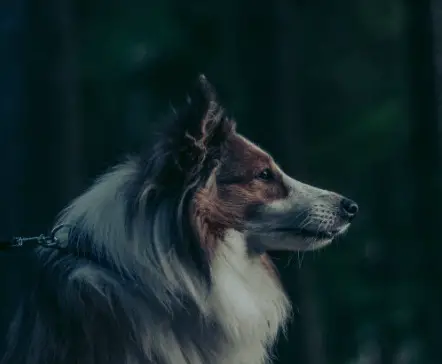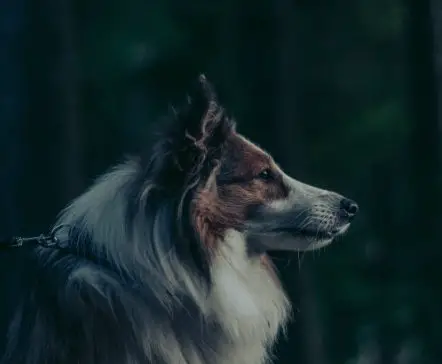As an Amazon Associate I earn from qualifying purchases.
Our Associate portal can be found here
A gun shy hunting dog isnt born gun-shy. They are entirely human made. Sadly, once your hunting dog is gun-shy, the damage is extremly hard to reverse. That is why introducing your dog to gunfire requires adequate caution and calculation. Even if you have the boldest dog, the wrong gun introduction can earn you the shyest dog. The worst mistake is letting your dog hear the gunshot first time it sees the gun.
On the other hand, a proper introduction can transition your dog smoothly and result in remarkable confidence. This happens when you or your dog’s trainer pays great attention to the dog’s response as well as the pace. Since dogs have varied sensitivity, the trainer should not focus on the timeline. Rather, he or she should be patient and understanding enough to let the dog learn at its own pace.
Start By Determining the Dog’s Confidence
Dog’s age or growth does not necessarily indicate that they have the required confidence to handle gunfire. That is why you must assess their confidence before you even think of firing a gun around them. A dog that is conversant with noise, loud bangs, and socializing should be confident enough. In addition, if it has some fundamental training done in a measurable and well-calculated manner, you can be confident that it is not timid.
To determine how confident your dog is, check on how it reacts to correction, new people, and environments and how it responds to loud noise. Bang doors and shout as much as you can while you pay attention to the reaction. Does your dog back up timidly with its tail tucked? Does he wag his tail with raised ears? Does it lurk when it sees new people or objects? Once you have these questions answered, you can easily determine if your dog is ready for gunfire or not.
Introduce birds As the Retrieving Value
The initial stages of the entire process do not require guns. If you assess your dog and end up with satisfying results, it is time to introduce the hunting of birds. No matter how small your dog is, if it is very comfortable with noise and new experiences, it is the right time to introduce birds. Chukars, pigeons, or quails can do. The whole point of birds is to act as a retrieving target and motivation.
During the hunt, allow the dog to find, flush, bump, and run after the birds. Carry your unloaded gun on the hunt and ensure the pup sees it. This helps the dog to associate your gun with positive results of getting to eat the dead bird as a reward. Moreover, make the dog understand that the reward is the result of carrying out the required tasks correctly.

Begin Slow and Build Up Gradually
Generally, initial stages of gun training require a positive environment and stimulating experience. Introduce bird hunting and solidify the achievements of desired tasks by rewarding your dog with a dead bird. Feel free to use any effective motivators aside from the dead birds. The most important point is to create a positive and motivating environment for gun conditioning.
However, any of the prep stages should be cautious and calculated. If the dead bird makes your dog skulk or he does not desire to eat it, do not push your dog past that threshold. Go back to the initial stage of encouraging, motivating, and rewarding your dog. Build up the conditioning slowly, patiently, and steadily. However, running into a lack of ecstatic excitement at the sight of a dead bird among puppies is uncommon.
Introduce Wing-Clipped Bird Hunting
Once you find your dog comfortable with hunting birds and retrieves the dead birds with a burst of excitement, it is time to move on. By now, it should be wagging the tail high with ears raised high around the trainer. Time for new encounters with wing-clipped birds. Clipping a bird will allow it to fly but not very effectively.
Throw the clipped bird in an enticing manner that compels the dog to chase it. Allow the puppy to chase the clipped bird. The dog might get catch the bird and or find itself outpaced, which is very okay. Repeat this several times until the dog dashes with intense speed and confidence after the bird. Once you achieve this level of confidence and energy, it is time to introduce the gun.
Introduction to Gunfire
This is the most crucial stage in the entire process. For a start, use a .22 starter pistol. Now that the dog is obsessed with birds, have the assistant stand more than 10 feet away from you and throw the bird. When you throw the bird and the dog begins to chase, signal the assistant to fire the pistol in the opposite direction. The gunfire sound should not distract the dog from charging after the bird. If the whole process progresses correctly, the sound should be insignificant to the dog.
Repeat the whole process several times for the next few days. As time goes by, move the assistant closer and closer to the dog. Eventually, your assistant can fire the gun from the core. When the dog is fully comfortable with a .22 pistol, switch to a .410 and 20ga if they are available and repeat the entire process.
If the dog displays confidence by wagging the tail high, maintaining the raised ears, and retrieves the bird with charged energy consistently, the training should take a few weeks. The trainer should then move on to teach the puppy other gunshots skills.
Prepare to Back Up Occasionally
The key to succeeding in the gun training is patience and awareness. If, at any point, lack of confidence creeps in, back off. The key point is to work with the dog’s pace and limits. Pushing your dog beyond its threshold can have negative implications that might be impossible to repair. Cement positive stimulation with adequate motivation. Pay close attention to the response and be ready to go back a few steps every time you sense discomfort.
Use a Sensible Approach
It is very understandable to be nervous and get worried as you take the dog through gun training. We all have come across stories of the dog gun training that went south. In addition, we have also heard several impractical theories of accustoming pups to gunfire in a short time.
Overall, gun conditioning is just like any other dog training. It is crucial to be sensible, cautious, and calculated while you introduce your dog to guns. If you are not aware of your dog’s confidence and end up subjecting him to a discouraging learning environment, you will end up damaging it. If your dog associates your gun with positivity, you will end up hunting with the most enthusiastic and confident dog in the world.
Amazon and the Amazon logo are trademarks of Amazon.com, Inc, or its affiliates.

36 years old, been hunting and fishing my entire life – love the outdoors, family, and all kinds of hunting and fishing! I have spent thousands of hours hunting hogs and training hunting dogs, but I’m always learning new stuff and really happy to be sharing them with you! hit me up with an email in the contact form if you have any questions.



